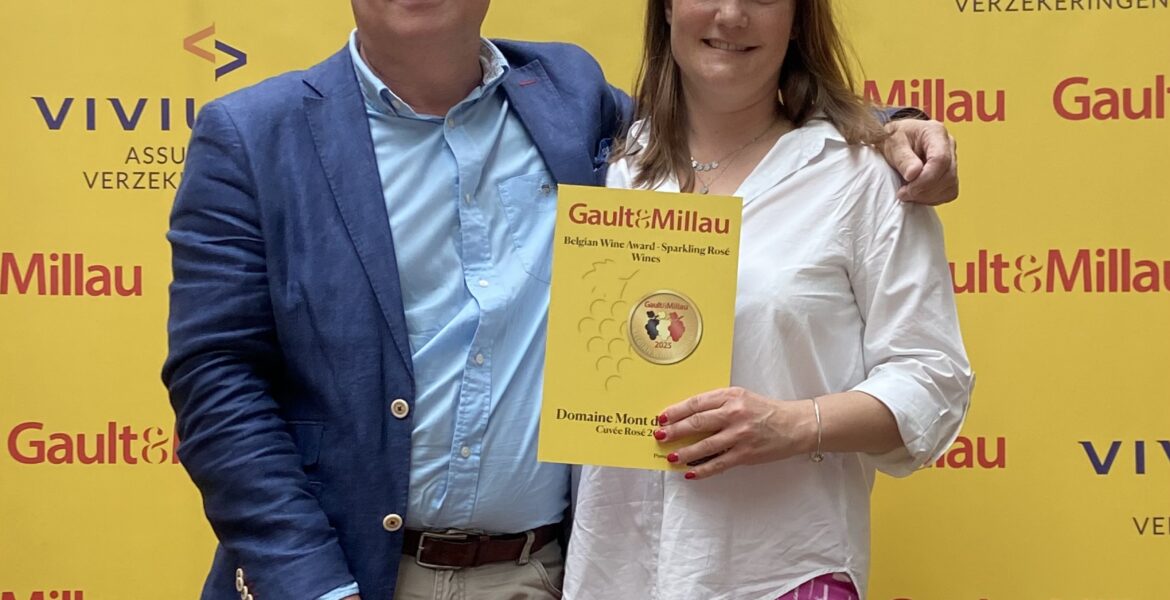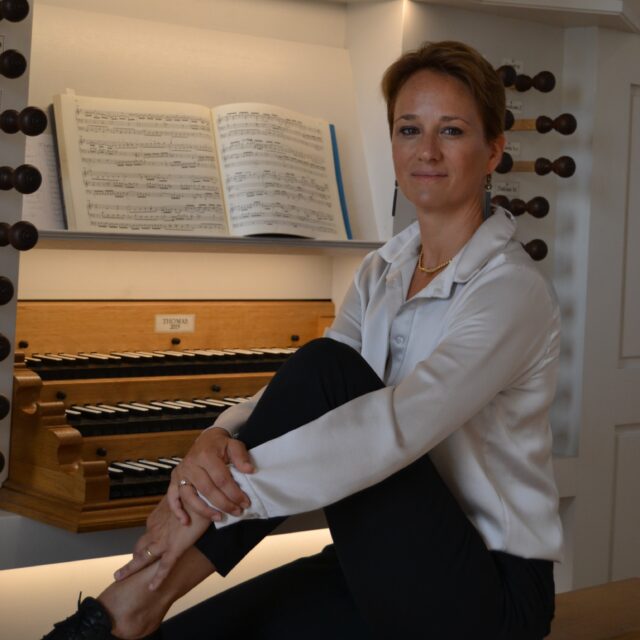The Mont des Anges vineyard, located at Mons, is named after a local legend: mythical angels supposedly helped the British army defeat German troops in a local battle in 1914.
The winery’s two owners – Belgian Vincent De Bussscher and his French-born wife Laurianne Lejour – this week launched three new wines, an event timed to directly coincide with the local festival in Mons that, each year, celebrates the angels story – together with another legend: Saint George.
The Doudou festival in Mons is an 800-year-old event that takes place on 14 and 15 June, a combination of religious and modern traditions. It symbolises the famous battle between St George and the Dragon and is also a nod to events at the start of the Great War in Belgium.
On the evening of 23 August 1914, surrounded by the Germans who outnumbered them five to one, 4,000 British and Commonwealth soldiers somehow managed to survive near-certain death and were saved. This became known as the Battle of Mons.
The soldiers are said to have been helped by celestial figures, or angels, to repel the Germans and the famous legend of Mons is still celebrated today in local folklore and also at the Doudou Festival.
This is an annual event where crowds locally also pay homage to Saint George as he goes into battle with a ferocious dragon in the middle of Mons’ Grand-Place.
Two of the newly launched wines are named after “Cybèle” and “Poliade”, two emblematic female figures of the Doudou Festival.
Cybele and Poliade,both still wines, are described as being full of freshness and liveliness.
Poliade is made from 100% Voltis, a hybrid grape variety – a cross between Chardonnay and an interspecific variety – naturally resistant to powdery mildew and downy mildew. These vines, planted in 2021, were vinified for the first time in 2023.
Poliade was aged for nine months in stainless steel vats on its lees to stimulate its aromatic development while ensuring it doesn’t become overly rich.
Vincent, speaking at the launch in Brussels on Tuesday, said, “This is a lively and fresh wine and its light gold colour suggests a lively, fruity, and lemony nose. The palate is taut with citrus aromas.”
“The structure is fresh and slightly mouth-watering, with a tangy and refreshing finish,” added Vincent, who also designed the wine labels.
The 2023 Cybèle vintage is a 100% Chardonnay with a light gold colour and green highlights. This wine was vinified and aged for 9 months in oak barrels, 50% in new barrels and 50% in barrels used for 4 wines. Light stirring was carried out to avoid adding too much fat.
The structure is, described as “fine and light, complementing the liveliness provided by the acidity that gives the wine its freshness.”
The third new wine is called “Blanck”, an aromatic and fresh “black” white, made from a blend of Chardonnay and Pinot Meunier whose origins date back to the very first Mont des Anges cuvée.
In 2020, Laurianne and Vincent harvested what nature had given them from very young vines: 750 kg of grapes, three-quarters Pinot Meunier and one-quarter Chardonnay. The winemakers took them to the Ardennes to a colleague who had a small one-ton press. Everything was vinified at his home, and the first cuvée was born.
Laurianne says, “It was a fusion cuvée rather than a blend, because the grapes were brought together right from the press. This technique brings a beautiful aromatic complexity. It’s a Belgian original; it’s forbidden in Champagne. This cuvée, sold at the end of 2021, was a great success.”
“This is what made us want to repeat the experience in 2022 and release Blanck 2022, zero dosage (Brut Nature).”
The estate now aims to produce 1,000 bottles each of Cybele and Poliade and 3,000 bottles of Blanck.
Full details of prices and where they are available can be obtained via: info@montdesanges.be or on montdesanges.be
The couple first acquired the site nearly ten years ago and planted their first vines in 2018. Since 2022, the vineyard has produced a range of six sparkling wines: Extra-brut, Blanc de Meuniers, Brut, Rosé, Blanc de Blancs, and Blanc de Noirs. It now produces about 80,000 bottles per year.
It is also a member of “Belbul”, a respected association representing producers of sparkling wines in Belgium.
The couple’s success was recognised this week at the launch of the new prestige Gault&Millau Belgian Wine Guide, a “bible” for wine lovers.
Domaine Mont Des Anges, a rose made from pinot noir, was one of the medal winners at the Gault&Millau awards on Monday and the estate is listed in the guide.
Mont des Anges itself is a relatively young vineyard but one that is steeped in regional culture.
Vincent told this site, “Our wines reflect an exceptional terroir to which we are very attached and the ‘angels’ legend inspired the name of the vineyard. This year, when we had the idea to create our first still white wines, we once again wanted to celebrate local traditions. The Doudou festival later this month was a natural choice as it is an integral part of the identity and life of the people of Mons.”
Vincent is relatively new to the wine-making business, having previously been employed in the financial sector all his life. He turned to the wine world “out of passion.”
He said, “Our new limited-edition vintages are named Cybèle and Poliade whose hearts, like our estate, beat for Mons.”
Laurianne, who is from the French Champagne region and whose family are steeped in winemaking heritage, said: “Since the vineyard was established, we have produced a range of sparkling wines. Since 2023 was a very good year, we had the idea of using grapes from certain plots to produce still white wines. This is a big first for us.”
“The idea was to create two still wines in the spirit of what is being produced on the Champagne hillsides, but we are not at all in the richness of Burgundy wines. We are focused on lively, fresh wines with low alcohol content – the alcohol content is between 10.5% and 11.5%.”
After extensive research, the two self-professed ‘terroir hunters’ established their vineyard in the Mons region, in Spiennes, Nouvelles, and, since 2020, in Havay, thanks to the “exceptional quality of the terroir.”
The estate covers 12 hectares. The chalk beneath the plots, combined with the shallow soil, grass cover, and the presence of the Spiennes flint (UNESCO listed), force the vines to produce concentrated grapes for aromatic wines.
The couple, who employ a six-strong team, produce sparkling wines using the traditional method, modelled on the Champagne method of splitting cuvées and pruning.
The grapes are harvested by hand at full maturity and pressed slowly and gently to retain only the best. The wines are made and aged for several months in the Frameries winery before resting in the bottle.
The vineyard practices extensive viticulture, meaning a low planting density, with fewer vines per hectare, which results in a naturally healthier and more airy vineyard. It makes a point of not using herbicides or insecticides.
Looking to the future, Vincent, who attended wine college for three years in Champagne before launching the business, says they have no plans for any major expansion of the estate. “The idea,” he says, “is to concentrate on improving the quality of our wines.”
Even so, he is also actively looking for possible UK-based importers and agents so that British wine lovers might also sample the delights of their terrific new (and existing) wines.




